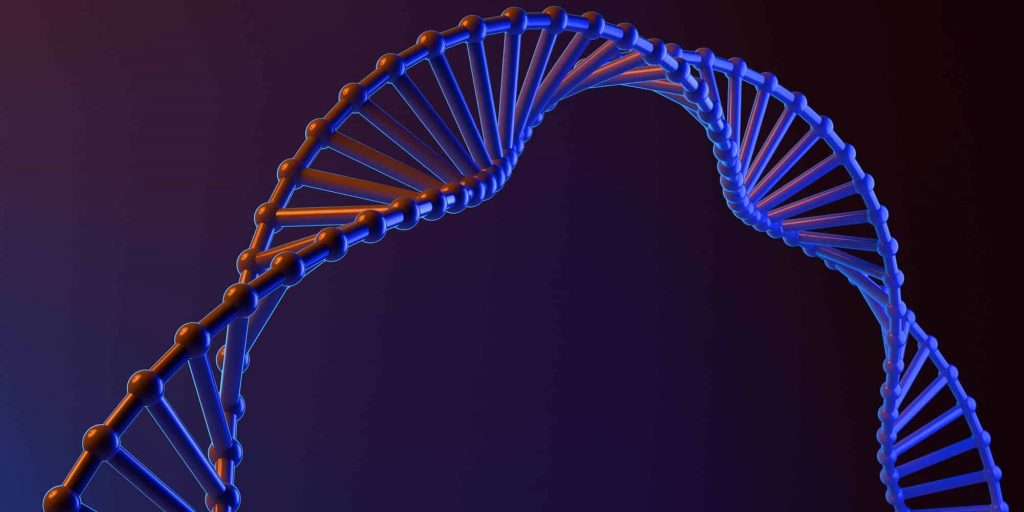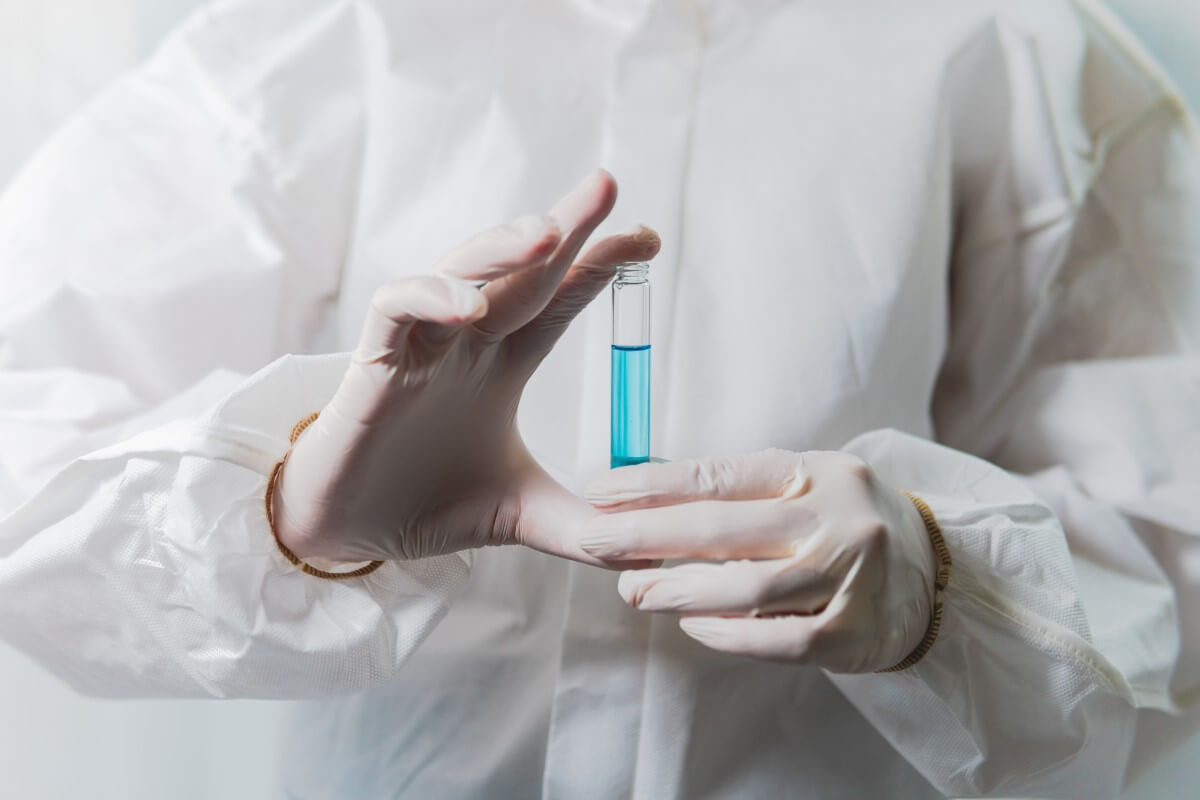Genome Sequencing Technology
Introduction to Sequencing
In 1869, a Swiss chemist called Friedrich Miescher first identified a compound he called “nuclein” inside human white blood cells. Nearly a century later, in 1952, Rosalind Franklin was able to produce high-resolution photographs of the DNA strand.
The following year, James Watson and Francis Crick used Franklin’s photographs to discover the famous double helix structure of DNA. In 1977, Frederick Sanger invented the Sanger sequencing method — but it wasn’t until 2003 that The Human Genome Project was completed.
The Human Genome Project was a large-scale genomics project, conducted from many different countries around the world, with the aim of sequencing the entire human DNA sequence for the first time. The Human Genome Project took 13 years to complete, and it was a ground-breaking step in the field of human genetic research.
In recent years, DNA sequencing technology has become more and more accessible. As new methods have been discovered, it has become possible for anyone to have their DNA sequenced for only a few hundred dollars, which it takes only less than few days. This has opened a wide range of possibilities in many different fields, from personalised medicine to scientific research.
The Meaning of Sequencing
Base pairs are the fundamental unit of DNA. They are formed by molecules called nucleotides, which are located on opposite sides of the double helix structure, and bound together to create a “step” of the DNA ladder.
What Is The Purpose Of Sequencing?
The order in which base pairs are arranged determines the functioning of our genes, the traits we exhibit, our ancestry and ethnic background, our metabolism, and even our risk for many diseases.
SNPs act as biological markers that help scientists compare different DNA samples to identify both differences and similarities. When SNPs affect regulatory genes, they can impact an individual’s health or disease risk.
- Structural Variations (SVs)
- Copy-number variation (CNV)
- Insertion and deletions (INDELs)
- Mitochondrial Heteroplasmy (MITO)
Decoding the human genome sequence has allowed scientists to better understand evolution, genetic inheritance, health, and many diseases. These technologies have made it possible for numerous molecular diagnostics tests, medications, and therapeutic procedures to be developed, and they’ll surely continue to contribute to scientific research for many years to come.
What Is A Sequence?

Simply put, a DNA sequence is the order in which base pairs are arranged in a section of your DNA. As we mentioned earlier, human DNA contains four different types of nucleotides: adenine (A), cytosine (C), guanine (G), and thymine (T).
DNA sequences are read in triplets — for example, ATG. Since bases are complementary and always join the same pair, it’s possible to deduce the partner triplet that corresponds to ATG on the opposite strand, which would be TAC in this example.
Genotyping vs Sequencing
Why Sequencing Is Better Than Genotyping
The Use of Sequencing

Diagnosing these diseases and identifying the mechanism that causes them can be extremely challenging. It’s also frequent for patients with rare diseases to be misdiagnosed at first, since it’s normal for physicians to initially try to rule out more common causes. But at the same time, a delayed diagnosis can lead to poor outcomes for these patients.
Genetic testing, particularly whole genome sequencing, can be extremely helpful in these cases. Since WGS reads the entire genome, it can detect any abnormalities that may be causing a rare disease. Knowing which genetic abnormality is causing a patient’s symptoms is the first step in learning more about the disease and how it can be treated.
WGS can also determine your carrier status for many genetic diseases. Even if you don’t have a disease yourself, learning this information can be very helpful for future family planning.
- Amino acid disorders
- Fatty acid oxidation disorders
- Sickle cell disease Thalassemia
- Cystic fibrosis
- Galactosemia
- Congenital hypothyroidism
- Congenital adrenal hyperplasia
Thanks to new and more affordable DNA sequencing technologies, newborn screening could supplement traditional newborn screening in the near future.
Incorporating whole genome sequencing (WGS) to newborn screening could allow doctors and parents to access a much wider range of information about the new baby. This will potentially result in a broader diagnosis, improved care, and a better quality of life for children diagnosed with a disease shortly after birth.
It’s very likely that genetic screening will become the norm in the not-so-distant future. In fact, countries such as the United Kingdom have already expressed their intention to offer routine DNA tests to their citizens.
- Heart disease
- Diabetes
- Hypertension
- Alzheimer’s disease
- Asthma
- Thyroid disease
- Obesity
- Different types of cancer
- Arthritis
- Autoimmune disorders
Even if you can’t modify your genetic predisposition for these diseases, identifying your genetic disease risks can put you on the right track to preventing them. Through genetic testing, personalised medicine can provide customised preventive strategies that are more effective for you.
Pharmacogenomics is another branch of genetic medicine that will probably become much more popular in the near future. Through DNA sequencing, you can obtain a full pharmacogenomic profile that will tell you how you may react to specific medications and whether you’re likely to suffer adverse reactions after taking them. This will undoubtedly make it easier for physicians to prescribe treatments that fit every patient perfectly.
More than 7,800 different diseases are currently known to have a Mendelian pattern of inheritance, but we only know the exact genetic cause of approximately 4,000 of those conditions. That means that, at any point in time, hundreds of thousands of people around the world could be suffering from complex diseases that can’t be easily diagnosed.
DNA sequencing can determine the exact genetic cause of a patient’s illness, thus providing a quick and accurate diagnosis for rare diseases. The incorporation of DNA sequencing into molecular diagnostics panels can make it possible for these patients to receive treatment sooner, thus improving their prognosis and quality of life.
Thanks to DNA testing, anyone can discover their ancestry from the comfort of their own home. Your DNA information can be used to determine ethnicity estimates, familial relationships, and even migratory patterns. Genetic genealogy makes it possible for brick walls to be torn down so that people can discover more extensive and thorough family trees.
Genetic genealogy is often used in combination with traditional genealogy research methods, which include:
- Document research
- Birth certificates
- Marriage and divorce records
- Death certificates
- Newspaper articles
- Religious records
- Adoption records
- Census records
- Medical records
- Court records
- Oral interviews
- Diaries or personal letters
- Photographs
- Tombstones
DNA tests compare the SNPs in a sample to many reference genomes in a database. Since specific SNPs can be commonly found among certain ethnic groups, identifying the SNPs in your DNA can provide ethnicity estimates.
When you upload your genetic information to different websites, you’ll also have the opportunity to be matched with other users who share some portion of your DNA so you can create your family tree.
Who Uses Sequencing?
Doctors and Healthcare Professionals
It’s also important for doctors to use genetic data to ascertain every patient’s disease risk. Having a genetic predisposition to a single, severe disease can significantly impact anyone’s well-being, and sequence data can be used to tailor preventive treatments for each patient.
Genomics also has a wide range of applications in the field of public health. Every population is different and has different needs — the DNA of a community can help public health institutions and researchers understand these needs better so they can create public health initiatives that are more effective.9 The possible benefits of genomics in the field of public health include:
- Ability to create public health initiatives that are tailored to the needs of specific communities.
- Enhanced understanding of infectious diseases and how to prevent them.
- Insertion and deletions (INDELs)
- Identification of disease risks that affect a population group.
How Does Sequencing Work?
First-generation sequencing
In the first-generation DNA sequencing method, such as Sanger sequencing, the molecules were first cloned into a prokaryotic plasmid and amplified within bacteria. Then, a primer was added to a denatured DNA fragment. This activates the synthesis of a single-stranded polynucleotide with the addition of an enzyme called DNA polymerase. Modified nucleotides, called dideoxynucleotides, truncated the activity of DNA polymerase, resulting in chain termination and smaller DNA fragments. The completed fragments are separated using capillary electrophoresis and analysed. Nowadays, Sanger sequencing is used to analyse shorter DNA molecules in low volumes. This method is highly accurate, despite its shortcomings. As it would be difficult to analyse large amounts of DNA bases quickly using Sanger sequencing, modern sequencing technologies come into play.
Next-generation sequencing
Next-generation sequencing (NGS) or high-throughput sequencing methods have primarily replaced first-generation sequencing technologies, largely due to their affordability and fast turnaround times. This allows the large amounts of DNA can be analysed in parallel and deliver the results in a matter of weeks or days.
In NGS, while undertaking certain traditional steps such as DNA template generation and parallelisation, DNA samples is broken into smaller pieces, thus generating many short read sequences. Then, bioinformatics software is used to piece these sequences back together and assemble the completed read, which is later annotated with relevant findings.
Many different types of high-throughput sequencing methods have been developed, including:
- Sequencing by synthesis (Illumina)
- Dye sequencing (Illumina)
- Pyrosequencing (454 Life Sciences)
- Single-molecule real-time sequencing (Pacific Biosciences)
- Nanopore technology sequencing
- Sequencing by ligation (SOLiD sequencing)
- Combinatorial probe anchor synthesis (cPAS- BGI/MGI)
- Ion semiconductor (Ion Torrent sequencing)
Different Types of Sequencing
The thoroughness of this test ensures that it doesn’t miss any genetic variants, large or small, that may be skipped over by more targeted methods. Modern sequencer machines are able to complete the sequence of an entire genome faster and more accurately than ever.
All parts of your DNA are important, but they don’t play the same roles. Certain parts of your genetic sequence contain instructions for the production of many different proteins — this is called coding DNA, or exons. Your exome is the combination of all the exons in your DNA. Whole exome sequencing (WES) is a sequencing method that only determines the order of the DNA bases in your exome, rather than your whole genome. However, WES still provides plenty of information that can be useful if you want to learn more about your genetic code
Targeted exome sequencing uses a “hot-spot” or targeted sequencing panel to focus the test on specific coding regions or genes of interest. The assay uses oligonucleotide primer pairs to amplify specific regions of DNA, rather than the entire genome.
Targeted sequencing produces a greater sequencing depth that can identify low-frequency variants associated with the disease. Targeted exome sequencing is most often used in clinical settings in which the objective is simply to confirm a diagnosis, rather than screening for many different diseases and traits.
Whole exome sequencing tests obtain data on around 1% of the genome, while whole genome sequencing tests obtain data on 100% of the genome. As you may suspect, one of the main shortcomings of WES is that it doesn’t analyse important portions of non-coding DNA, which can include variants that are still relevant to many processes inside the human body.
WGS, on the other hand, is used to sequence each and every single nucleotide in the human genome. As we stated above, non-coding DNA fragments also play an important role, which is why sequencing it is just as important as sequencing the rest of your DNA.
Research also shows that WGS is more powerful than WES to detect genetic variants in the exome itself, thus making it a more accurate test.
Sequencing DNA
However, DNA sequencing has the most clinical applications. Now, let’s discuss some of the different methods that can be used to sequence DNA.
Short Read vs Long Read Sequencing
Short read (next generation) and long read (third-generation) sequencing refer to the length of the DNA fragments that each method can process at once. By performing analysis on longer stretches of DNA, these new methods could make the sequencing process even faster.
Next-generation sequencing methods have revolutionised DNA sequencing, but they still produce relatively short reads. Third-generation sequencing technologies, or long read sequencing, are currently being developed in the hopes of making DNA sequencing even faster and more portable.
Although long read sequencing is still prone to high error rates, it’s expected to keep improving in the near future. Soon, long read sequencing methods could become the norm and outperform existing sequencing technologies.
Genome Sequencing Cost
When sequencing technologies were first invented, they were slow and incredibly expensive. Sanger sequencing, which was the first method to be widely used for sequencing, was only able to perform short read DNA analysis. The Human Genome Project was an incredibly expensive project, costing more than $2.7 billion spread out over more than a decade of work.
But as next-generation sequencing platforms have become available to a wider audience, prices have dropped significantly. The race for the “$1,000 genome” started in 2001, with companies working tirelessly to come up with new technologies that would sequence whole human genomes for $1,000 or less.
Nowadays, it’s possible to simply order a home-based DNA testing kit, take a sample at home, and receive your sequencing results for just a few hundred dollars.




